INTRODUCTION
After roughly 8 years of testing NAS servers i still get asked quite a lot by both regular consumers and people of the electronics industry as to why i refer to network attached storage devices as servers. We did answer that last time we had one such review with a small history "lesson" so once again although when introduced in the market over a decade ago NAS devices had but one purpose which was to make lots of storage space available to local network computers that changed over the year and since right now they can be used for a plethora of things other than that (by both regular consumers and professionals alike) i think that they have won every right to be called that. It's been a while since we last had a NAS server by ASUSTOR in our lab but since they recently released their brand new AS620xT series it was just a matter of time before the 4bay model made it here.
Founded in 2011, ASUSTOR Inc. is a leading innovator and provider of private cloud storage (network attached storage) and video surveillance (network video recorder) solutions. We are devoted to providing the world with unparalleled user experiences and the most complete set of network storage solutions possible.
ASUSTOR is the very first NAS manufacturer to use the brand new and much improved (compared to the previous generation J1900 model) Celeron N3150 Quad-Core CPU by Intel that runs at 1.6GHz (64Bit, 14nm, 6W TDP, 2.08GHz Burst speed, 2MB of L2 cache, AES hardware encryption, 8GB DDR3L Max) and has the Cherryview integrated HD Graphics (Mesa 10.6.0) which fully supports DirectX, OpenGL 3.0 and Intel’s Quick Sync Video, Clear Video HD Technology and Wireless Display technologies. The AS6204T also features 4GB of DDR3L RAM (2x2GB running at 1600MHz), four SATA III bays (support single, JBOD and RAID 0/1/5/610 modes), three USB 3.0 ports, two USB 2.0 ports, two eSATA ports, two RJ45 Ethernet ports, HDMI v1.4b port, IR receiver and an S/PDIF optical audio output. So let's move closer and see how the new N3150 CPU compares to its predecessor and pretty much every other CPU used in NAS models currently.
SPECIFICATIONS AND FEATURES

PACKAGING AND CONTENTS
Once again at the front of the box you can see two product pictures, the model name, company logo and the main product features listed at the lower end as small icons.
Listed on the left side are also some of the product features along with a comparison between the AS6204T and other models by ASUSTOR.
The specifications table is placed on the right side of the box next to the available mobile apps.
You can find the features list at the rear of the box printed in 19 languages.
A sticker located at the top of the box contains the product part number, serial number, barcodes, installed firmware and MAC address.
Five 2D barcodes are the first thing you'll see once you open the box.
The NAS is wrapped inside a plastic bag and placed between two foam spacers.
Inside the box you will find the AS6204T NAS Server with its power adapter and cord, two LAN cables, software CD, two small bags with HDD mounting screws (2.5/3.5") and the installation guide.
THE AS6204T EXTERIOR
ASUSTOR has again used the same design for their latest NAS servers and so the AS6204T measures 230mm in depth, 170mm in width and 185.5mm in height while it weighs a total of 2.9kg.
Both sides of the enclosure are once again perforated so that hot air from the interior can escape easier.
ASUSTOR has placed their logo on the left upper corner above the on/off power button, the on/off and HDD/Ethernet/one-touch backup activity LEDs and the one-touch backup USB 3.0 port.
A long VFW screen and its 4 navigation buttons is placed above the 4 drive trays.
All four drive trays feature activity LEDs and locks which can be used with a flat screwdriver.
We've seen the same aluminum/plastic trays with all the previous ASUSTOR models but since they are very sturdy i see no reason for that to change.
The rear contains all of the connectors but it's the large 120mm exhaust fan that really steals the show.
From top to bottom we find the S/PDIF optical audio output, HDMI 1.4b video output, two eSATA ports, two RJ45 Gigabit Ethernet ports, 2 USB 3.0 ports, 2 USB 2.0 ports, power port and a Kensington lock.
THE AS6204T INTERIOR
Accessing the interior requires the removal of the three rear screws (however we didn't take the unit completely apart).
The AS6204T arrived with two 2GB DDR3L @ 1600MHz modules by DSL (Samsung modules) and according to the CPU specs you can use up to two 4GB ones if you want (8GB total).
We also see the ITE IT8728F Super IO/LPC controller which is used to monitor the temperatures of the unit and the Realtek ALC887 7.1 Channel High Definition Audio Codec.
A large heatsink is placed above the new Intel Celeron Quad-Core N3150 CPU.
With our four Seagate Constellation ES.3 4TB drives mounted we are ready to proceed with our tests.
LCD SCREEN
Just like previous models ASUSTOR has placed an LCD screen at the front of the AS6204T from where you can see the current IP assigned to the NAS, start the one-touch backup process, check the total drive space (and the available one), monitor the temperatures of the system and the CPU, shutdown and restart the server, change the name of the server and finally you can adjust the network settings.
SETUP
As usual the easiest and fastest way to setup the unit is to launch the control center software, wait until it locates the NAS in your local network and then start the setup procedure.
You can choose between the fast 1-click setup and the custom setup (typically we followed the custom route).
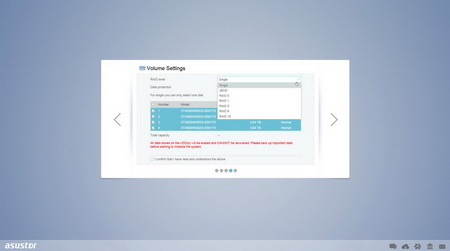
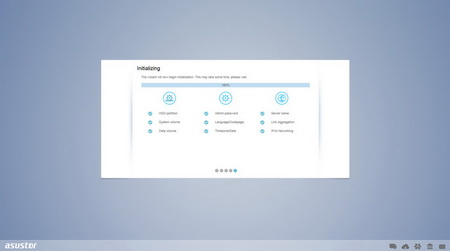
Via the custom route you will need to set the server name (if you don't like the default one), server password, time zone, language, network options and configure the drives (single/RAID/JBOD) in order to proceed.
You can also create a new ASUSTOR id if you don't already have one to get official support and be able to download applications and use the cloud connect service.
ADM 2.5 PART 1
The login screen of the ADM v2.5 OS may not be very flashy but we like it.
The main screen has all the applications installed by default (you can add many more).
You can access the layout settings menu and logout, restart or shutdown the NAS from the admin selection on the far right of the top bar.
As with previous ADM versions from the Access tab you can add/remove user accounts, groups, domain users, domain groups and you can also create shared folders and set application privileges.
The Activity Monitor allows the end user to monitor the NAS so from here you can check the available space on the installed drive(s), check the CPU/Memory/Network utilizations and see what processes are currently running.
The Backup & Restore tab allows you to remote sync options, setup FTP/Internal/External backup jobs, configure the one touch backup (front USB port), use the cloud backup feature and also adjust the system settings.
From the External Devices tab you can check the state of attached drives, format them, prepare them for ejection and you can also check the state/adjust the settings for attached printers, Wi-Fi adapters and UPS devices.
The File Explorer page allows you to upload and download files from and onto the NAS without much effort (although i do recommend mapping a drive letter from your network options in Windows).
Under the Services tab the end user can find several server options for Windows/Mac OSX/NFS/FTP Server/WebDAV/Web Server/MySQL Server/Terminal and SNMP use.

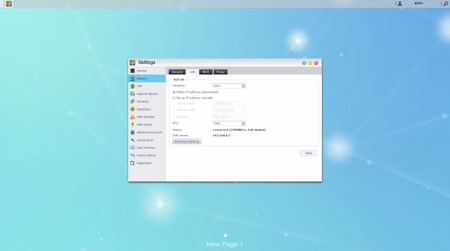

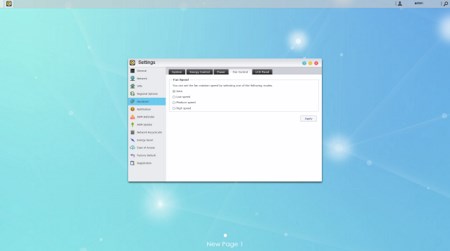
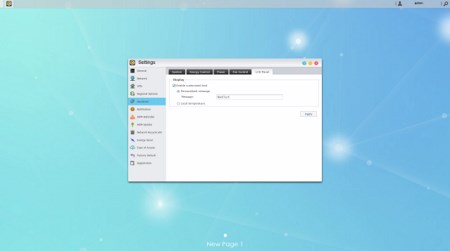

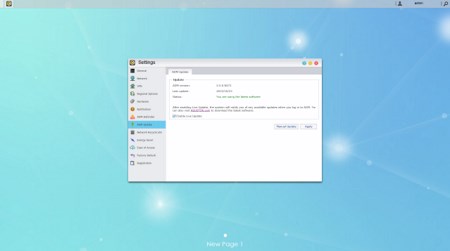
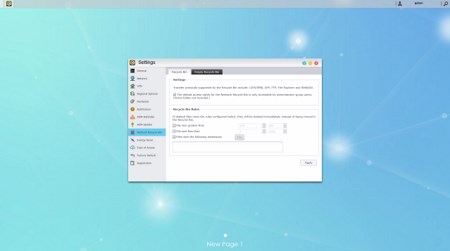
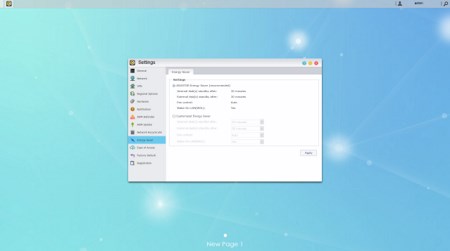
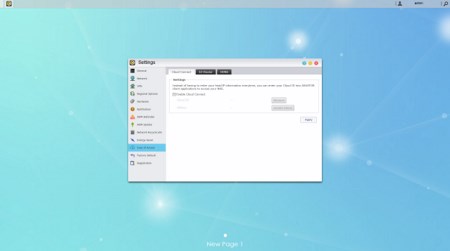
Pretty much everything else is placed inside the settings tab so from here you can adjust including the network settings, regional options, hardware options (LEDs/Buzzer/Fan control/Power settings/LCD text), various notification options, ADM defender (firewall), ADM update (manual or automatic), network recycle bin, energy saver (drive standby mode/fan control/wake on LAN), ease of access (Cloud Connect/EZ Router/DDNS), factory default settings and product registration.
ADM 2.5 PART 2
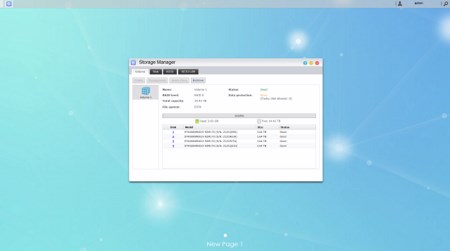
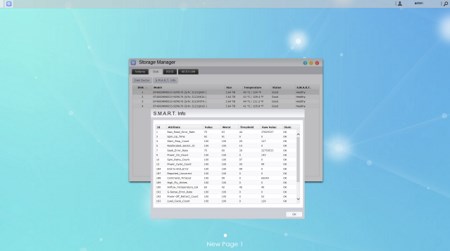
Everything related to the installed drives is placed inside the Storage Manager tab so here you can create and manage volumes (JBOD/RAID), check the state of the drives via SMART and use the iSCSI feature.

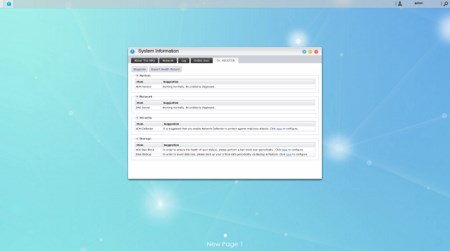
The System Information tab allows the end user to check the state of the hardware components of the NAS (including their temperatures), check the network activity, read logs, see who's logged in and use the DR.ASUSTOR diagnostic tool.

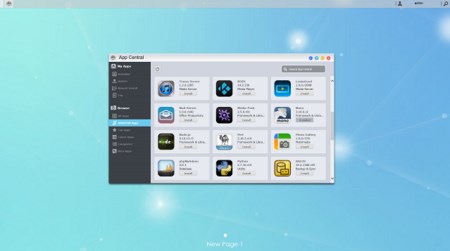
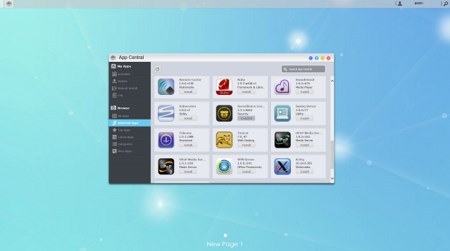
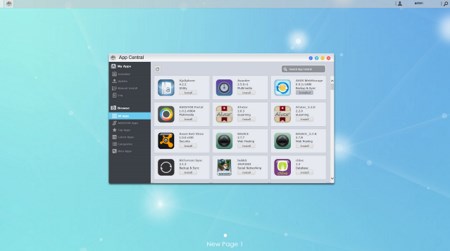
ASUSTOR may not have as many applications as QNAP but they make more and more available everyday so aside the 37 "official" ones their App Central has many more.
From the Download Server tab not only can you download files using the BitTorrent Client but you can also use it to download files directly from HTTP/FTP.
The ASUS WebStorage tab allows you to link your ASUS WebStorage account (2-5GB of cloud space) to sync files directly to it from the NAS.

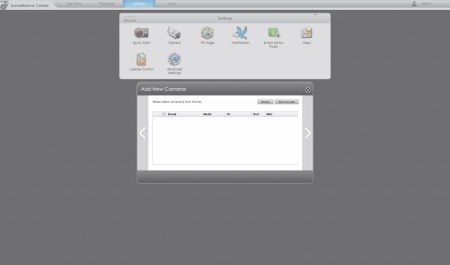
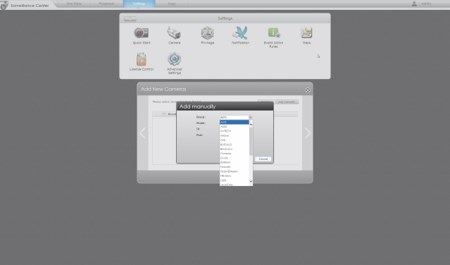
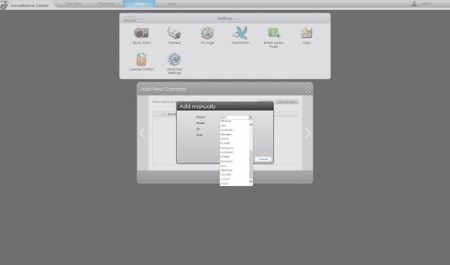
ASUSTOR has added more camera models in their Surveillance Center (27 manufacturers now instead of 13 in the last version) but it still needs work. I'm saying this not only because none of our 3 installed IP cameras (Linksys, TRENDnet, iMege) was detected by the auto feature but in terms of available IP camera models ASUSTOR still has a limited number.
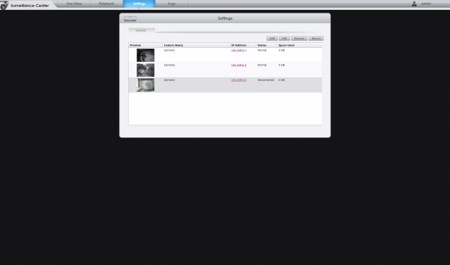
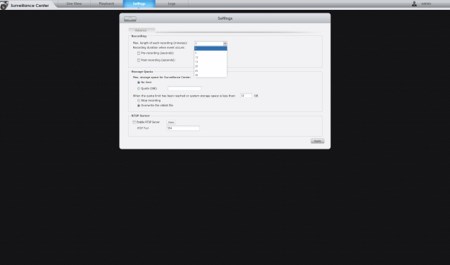
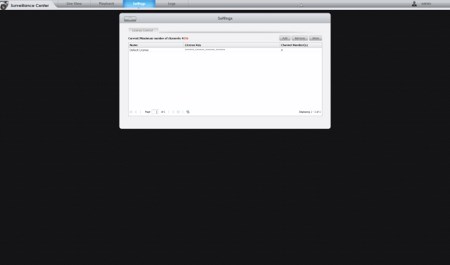
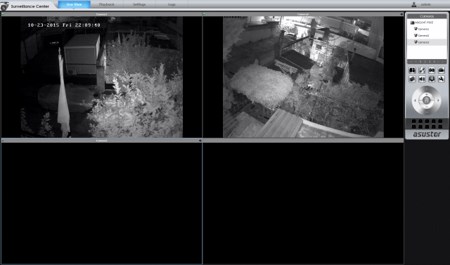
Still thanks to the extra manufacturers compared to last time and the ONVIF compatibility mode we were able to manually setup all 3 models (although the iMege one would not show in the main screen).
KODI SOFTWARE
As you can all see via HDMI you can access the ADM OS, Chrome, YouTube, Surveillance Center and KODI.
KODI may have reached version 15.2 (14.2 is officialy available by ASUSTOR and 15.1 is available under their Beta Apps section) but it’s still identical to XBMC (previous name).
You can personalize the XBMC application quite a bit (for example change the skin of the menus and set the region/language/audio language options).
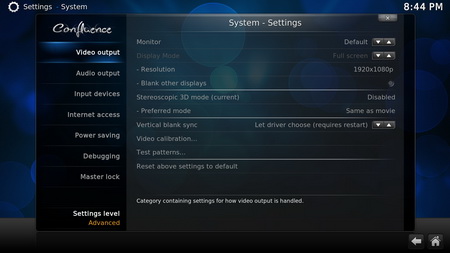
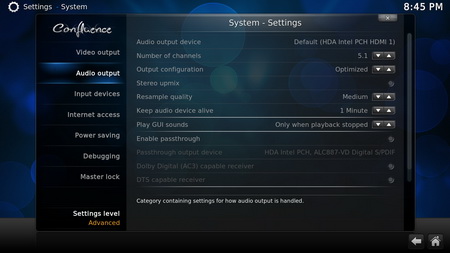
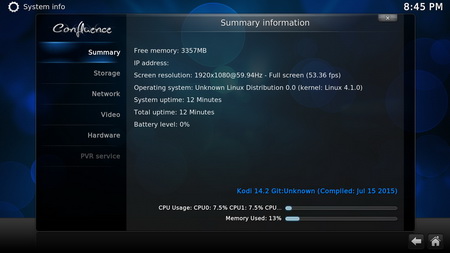
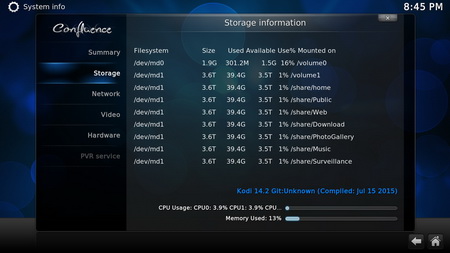
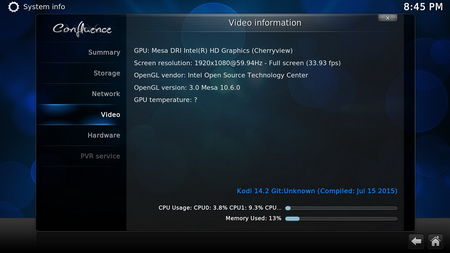
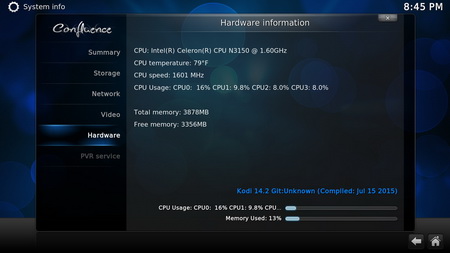
You can also check the various hardware/software information screens and of course adjust video and audio settings.




From this point forward we'll be using two Blu-Ray rips to test NAS servers, our regular MKV rip of Avatar S.E (42GB) and the MKV rip of Avengers Age Of Ultron (35GB). We thought about using just Avatar but since we got the Avengers Age Of Ultron Blu-Ray we think this is best. Playback-wise as expected from a 4k capable model we experienced no issues with the AS6204T.
ANDROID/IOS APPS
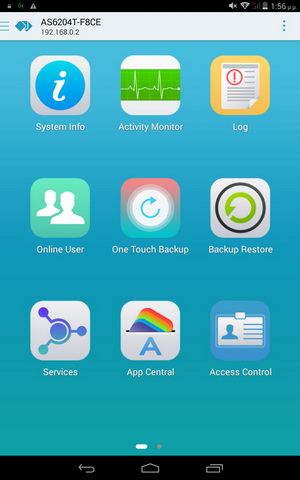
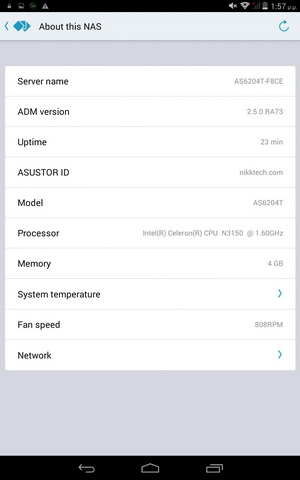
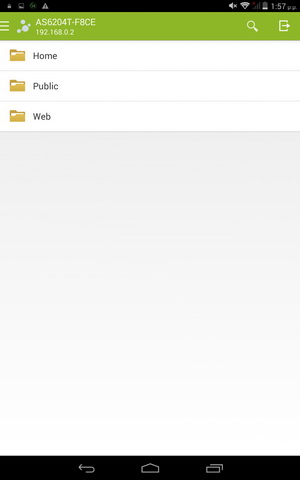
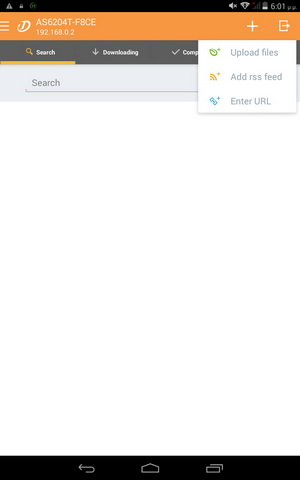
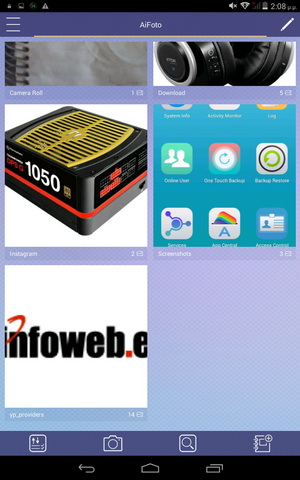
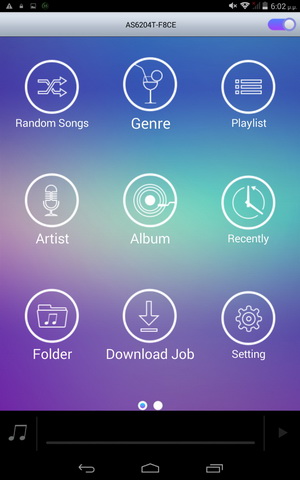

ASUSTOR has updated its list of android and iOS compatible applications and these include the AiMaster which you can use to access most unit functions and details, AiData which allows the user to access files stored in the NAS, AiDownload which can be used to monitor and add/remove downloads to the unit, AiMusic for audio media streaming, AiPhoto for picture sharing, AiVideo for media sharing and AiSecure for access to the Surveillance Station (although unfortunately you can’t add/remove cameras from within the app).
TESTING METHODOLOGY – PERFORMANCE RESULTS
Originally we had decided that since some of the NAS servers/devices we've tested in the past are no longer in our possession (naturally) we would keep performing the exact same testing methodology we did in the past for as long as possible in order to provide accurate comparison results. However since our real-life tests are not enough for some people we also decided to throw in ATTO and Crystal Disk Mark to cover the more demanding users. However as always we will be using up to six Seagate Constellation ES.3 4TB SATA III hard disk drive(s) with 3.5” compatible units and up to two (for now) Enterprise Capacity 2.5 HDD V3 2TB SATA III HDDs with 2.5” compatible units to perform several upload/download tests with 10.9GB (Single) and 40,8GB (RAID) files. Tests are repeated a total of 4 times after which we record the average numbers (from the 4 peak ones) into our charts. The network device used for 1GbE tests is the same Netgear D6300 AC1600 Gigabit ADSL2+ Modem/Router we’ve been using lately when performing tests on NAS servers. Since the 25th of June 2015 for 10GbE tests we’ll be using a Netgear ProSafe XS712T 10G Smart Switch and an Intel XT540-AT2 10GbE PCIe card (10GbE compatible NAS cards will be provided from each company and stated in each review).
SINGLE DISK TESTS
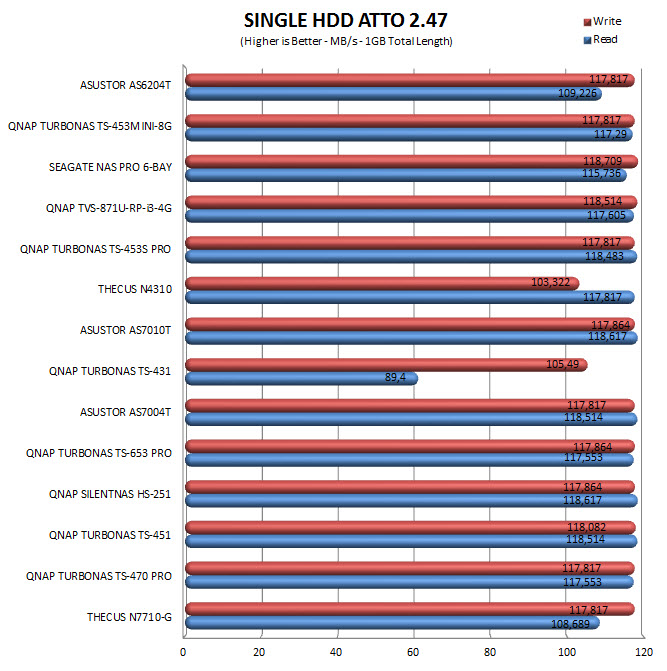
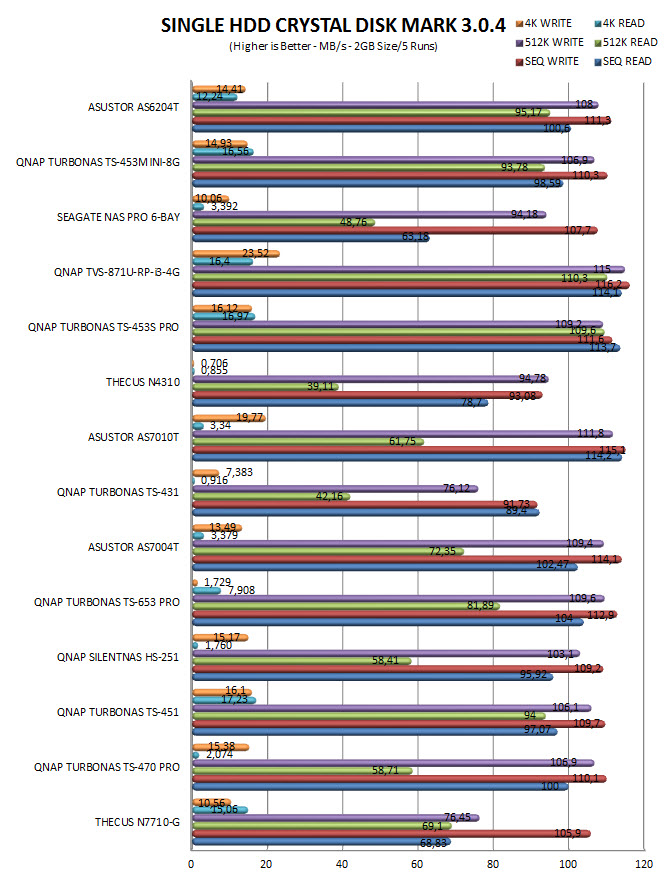

RAID TESTS

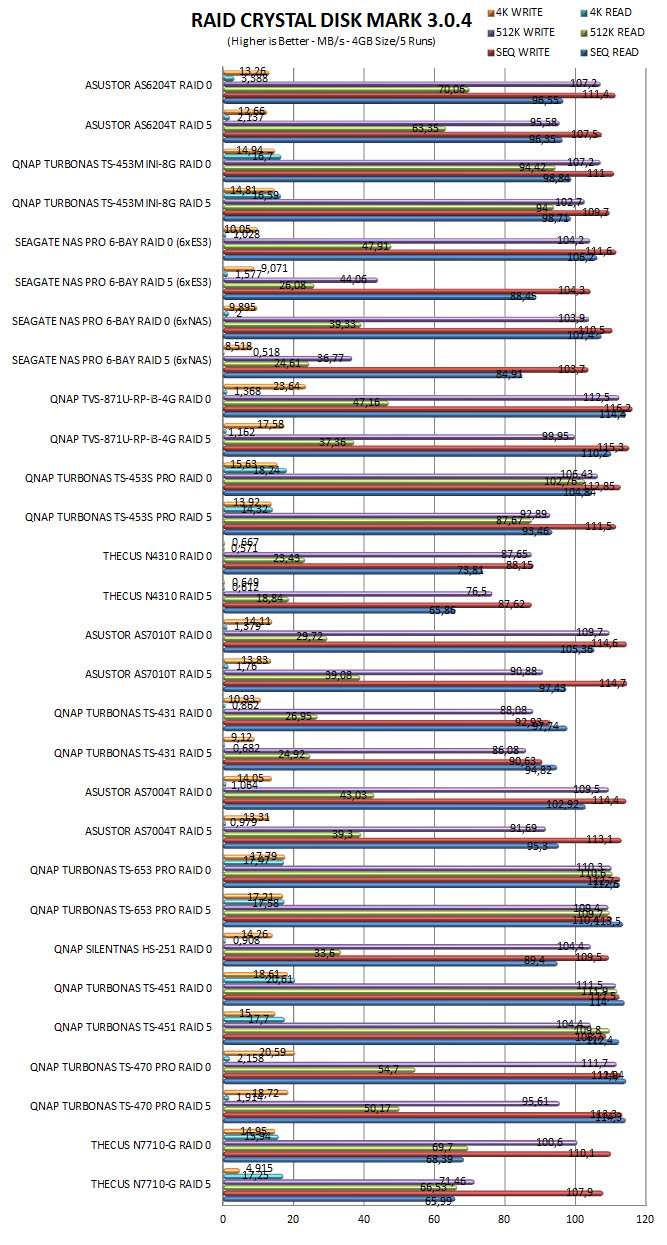

TEST RESULTS – TEMPERATURES / CONSUMPTION / NOISE
TEMPERATURES

POWER CONSUMPTION

NOISE LEVELS

CONCLUSION
When we sat down to compare the old (2013 model) J1900 Quad-Core Celeron model to the new (2015 model) N3150 we were surprised to see that Intel had lowered its clocks (1.6GHz from 2GHz) and the clocks of the new HD graphics (320/640MHz from 688/854MHz). Clocks however are not everything and so aside the fact that the new N3150 requires less power (6W vs 10W) it also features many new technologies by Intel like Data Protection (AES encryption & Secure Key), HD audio technology, thermal monitoring and secure boot. The new Cherryview HD graphics processor also supports DirectX and OpenGL along with several Intel technologies not available in the HD graphics processor used in the J1900 like Quick Sync Video, Clear Video HD Technology, Clear Video Technology and Wireless Display. The end result may not be easy to tell by just looking at our charts (although the AS6204T did excellent even with just 4GB) but the new N3150 CPU was built with 4k playback in mind and thus should easily outperform solutions based on the J1900 in that aspect (we are trying to get our hands on 100% pure 4k material to test such devices with but it’s not as easy as we had thought it would). Unfortunately the virtualization application for the AS620xT series is in beta (we will test it when released officially) and accessible only via ASUSTOR Portal and their Surveillance Station still needs some work but I do believe they’re getting there.
Brand new NAS models always cost quite a bit and that goes double for the ones that feature all the latest components so since the AS6204T wears the brand new N3150 quad-core Celeron CPU and Cherryview GPU by Intel it couldn’t come cheap. Still the USD674.75 inside the USA (Amazon.com) and 669Euros inside the EU (Amazon.fr) ASUSTOR asks for the AS6204T is not what I’d call expensive, not with what it has under its hood. Certainly I would had liked to see 8GB pre-installed instead of 4GB but as you can all clearly tell from our charts even 4GB are more than enough to compete with models that have even double that. Long story short the AS6204T NAS Server by ASUSTOR is a solid solution for people who want a powerful yet silent model with 4k playback capabilities (and then some) and a plethora of features which is why we’re giving it our Platinum Award.
 PROS
PROS
- Build Quality
- First To Use The New Intel Celeron N3150 Advanced Quad-Core CPU
- Cherryview Intel HD Graphics GPU
- Excellent Performance
- Features
- 4GB DDR3L RAM (Expandable To 8GB)
- Power Consumption / Noise Levels / Temperatures
- 2 Gigabit Ethernet Ports
- 3 USB 3.0 Ports & 2 USB 2.0 Ports
- 2 eSATA Ports
- Optical S/PDIF Output
- HDMI v1.4b Output
- LCD Screen
- RAID 0/1/5/6/10
- SATA III (6Gb/s)
- ADM 2.5 OS
CONS
- Surveillance Center Needs Work
- Virtualization App Only Accessible Via ASUSTOR Portal

 O-Sense
O-Sense





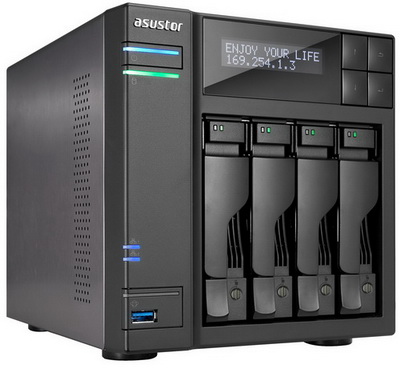
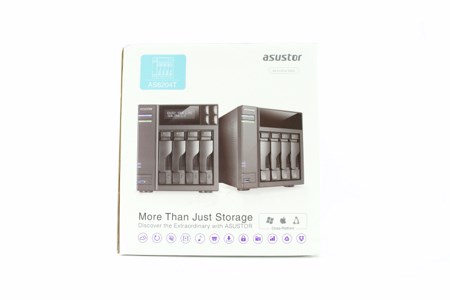
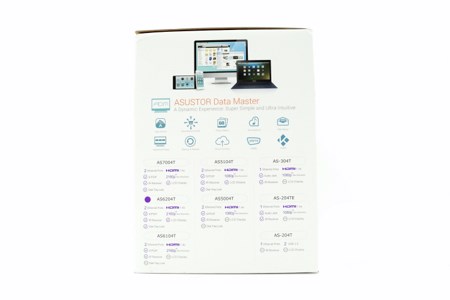
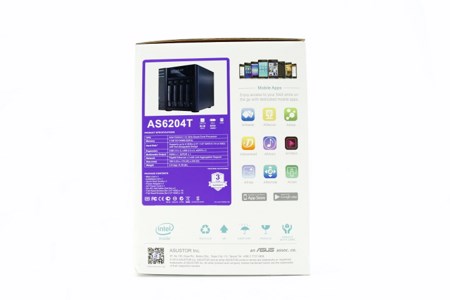
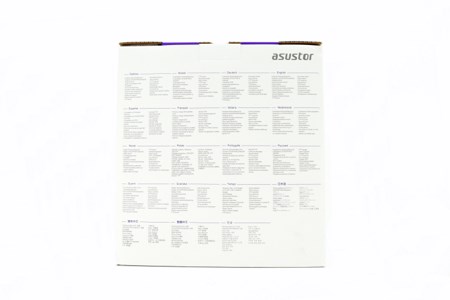
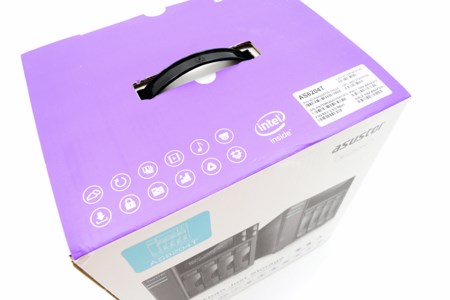
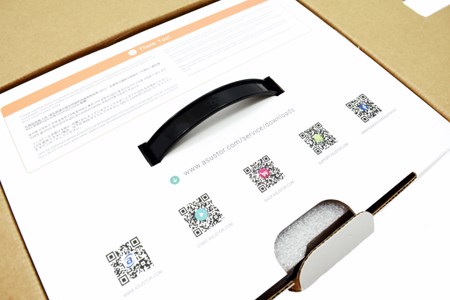
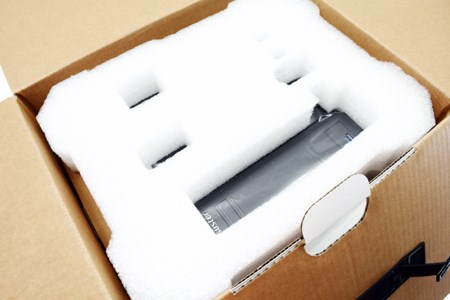
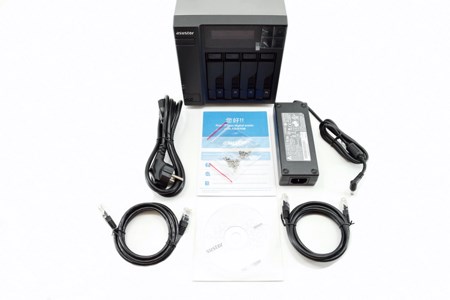
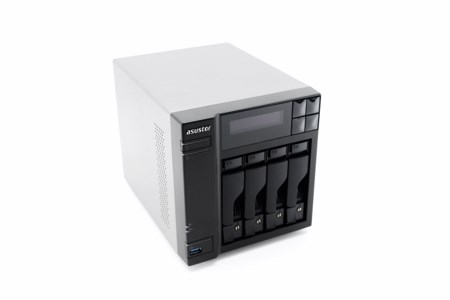

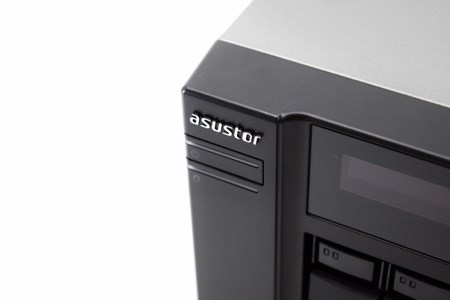
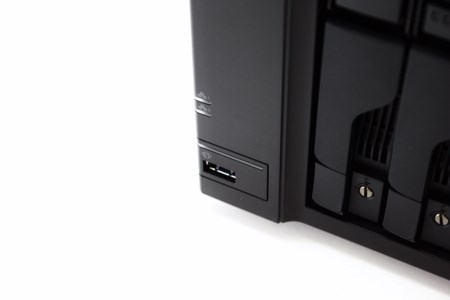
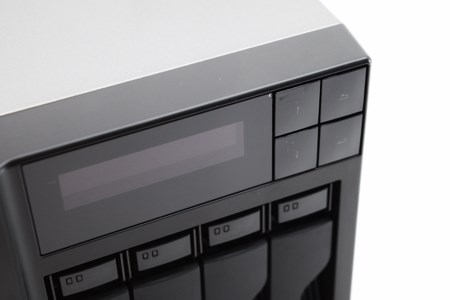
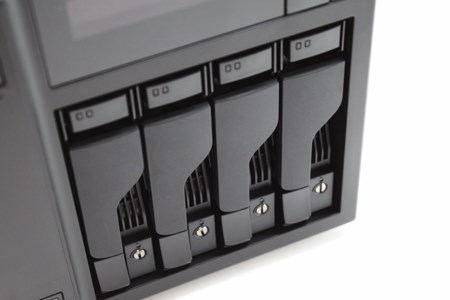
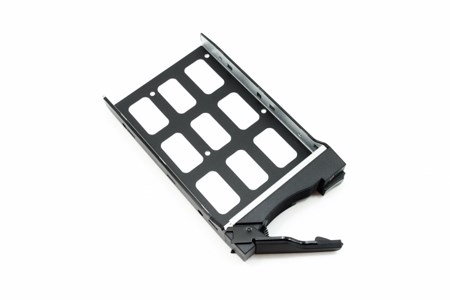
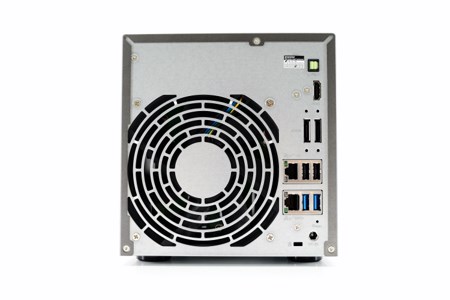
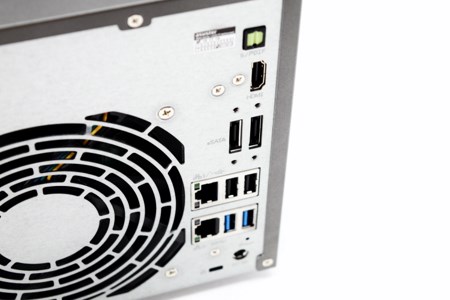
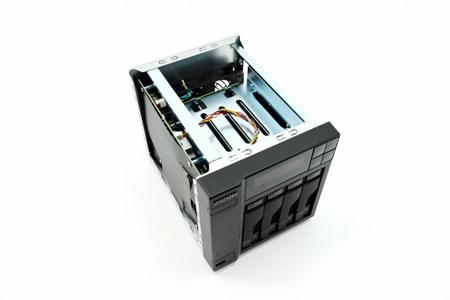
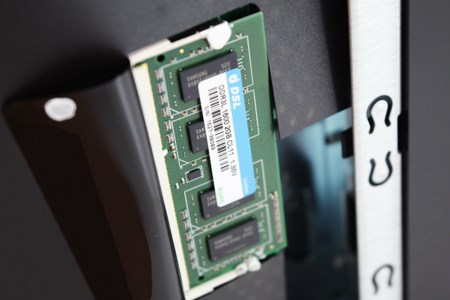


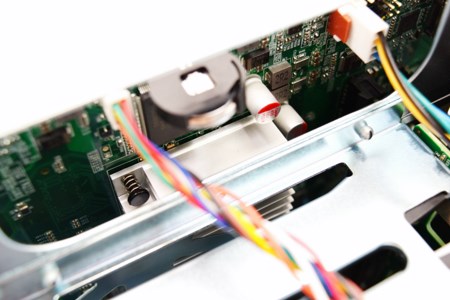
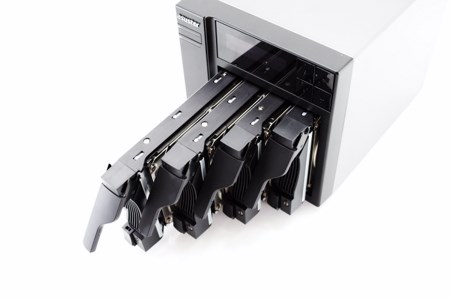
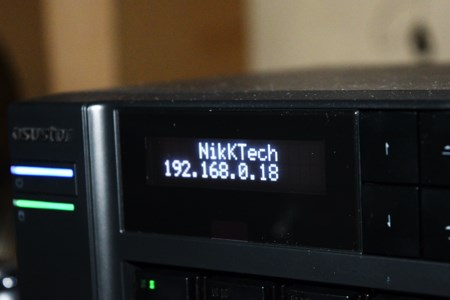
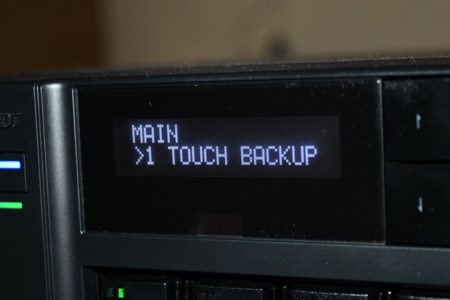
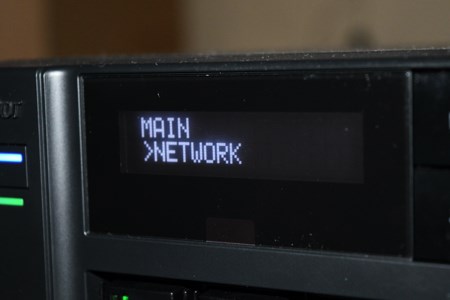

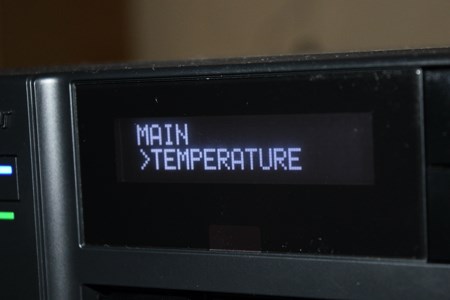
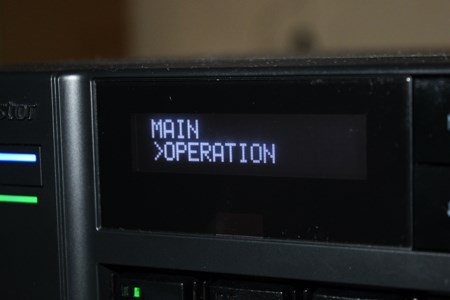
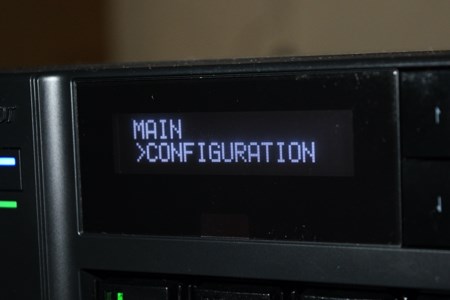
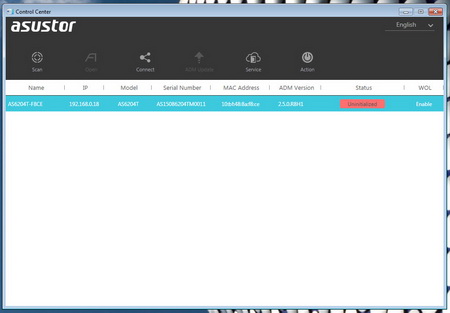
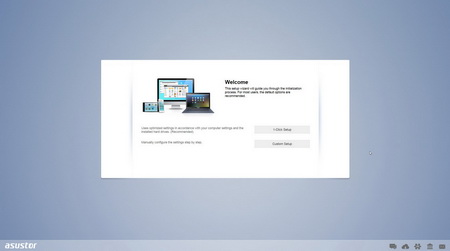
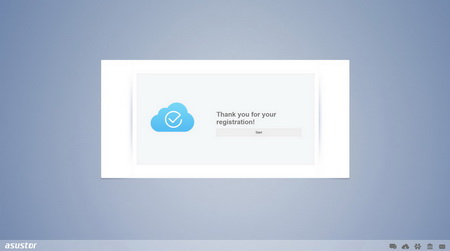
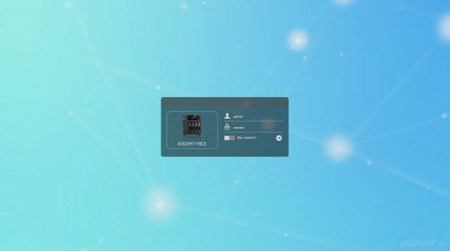
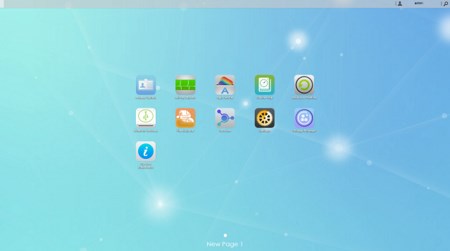
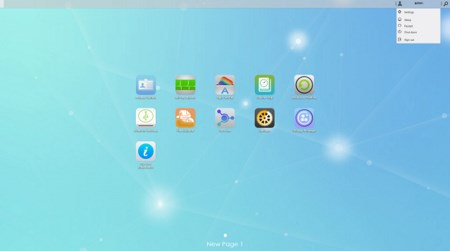
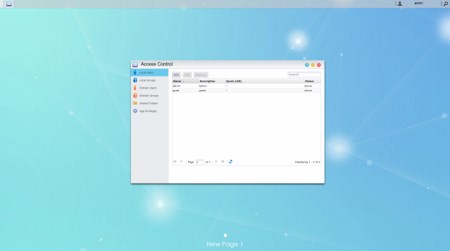
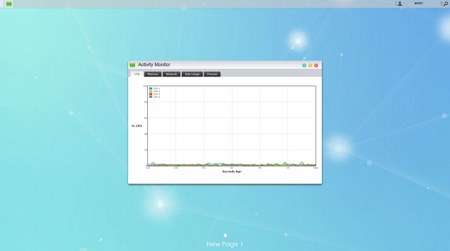

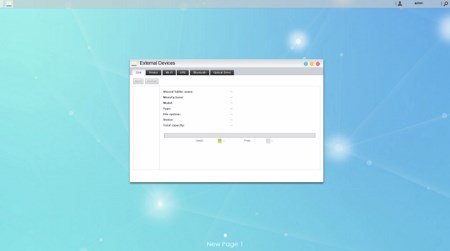
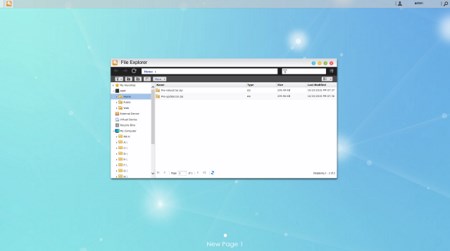
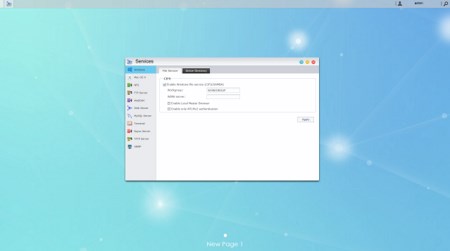
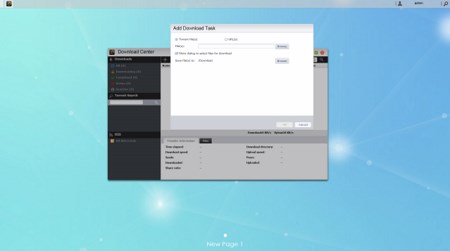
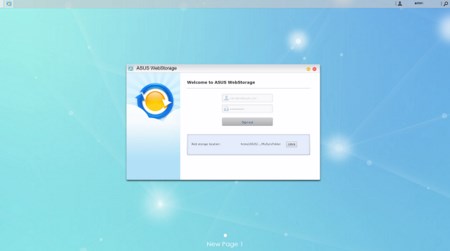
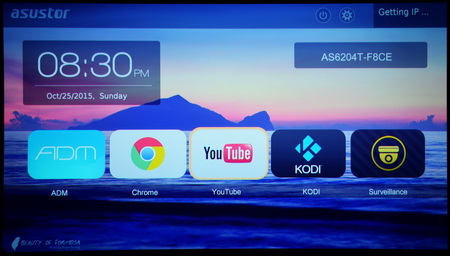
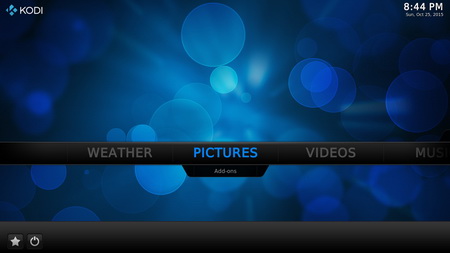
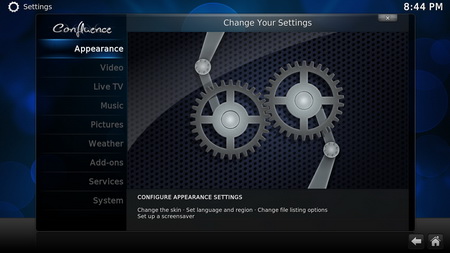



.png)

